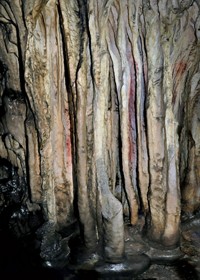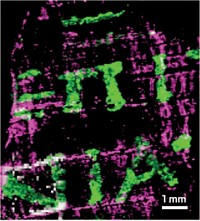Advertisement
Grab your lab coat. Let's get started
Welcome!
Welcome!
Create an account below to get 6 C&EN articles per month, receive newsletters and more - all free.
It seems this is your first time logging in online. Please enter the following information to continue.
As an ACS member you automatically get access to this site. All we need is few more details to create your reading experience.
Not you? Sign in with a different account.
Not you? Sign in with a different account.
ERROR 1
ERROR 1
ERROR 2
ERROR 2
ERROR 2
ERROR 2
ERROR 2
Password and Confirm password must match.
If you have an ACS member number, please enter it here so we can link this account to your membership. (optional)
ERROR 2
ACS values your privacy. By submitting your information, you are gaining access to C&EN and subscribing to our weekly newsletter. We use the information you provide to make your reading experience better, and we will never sell your data to third party members.
Analytical Chemistry
Lost color revealed on Ancient Greek marble
New X-ray fluorescence technique maps trace remnants of green pigment on a sculpture depicting the Trojan War
by Sarah Everts
December 27, 2016

One of the archaeological delights found in the ancient Greek city of Delphi is the frieze of the Siphnian Treasury, built in 525 B.C. It depicts scenes from the Trojan War, including a sculpture of the hero Achilles wielding a shield decorated with the head of the monster Medusa.
Nowadays, the monster’s hair—like the rest of the frieze—is the mottled brown color of ancient marble, but it wasn’t always so. Medusa’s tresses were once painted green, according to a team of researchers led by Matthias Alfeld and Philippe Walter at the University of Pierre & Marie Curie, in Paris (Anal. Chem. 2016, DOI: 10.1021/acs.analchem.6b03179).
Scientists who study ancient archaeological art have been discovering that the elegant sculptures of Ancient Greece were once painted in garish colors.
Out in the field or at a museum, researchers often use X-ray fluorescence (XRF) analysis to detect traces of long-lost pigments. To use the technique on three-dimensional sculptures, scientists typically take XRF point measurements all over the object, because more advanced XRF scanning techniques are currently limited to flat, two-dimensional surfaces such as paintings or manuscripts.
To study Medusa’s hair, Alfeld and Walter’s team developed a new XRF technique that can map the surface of 3-D objects: The researchers first scanned the surface using 2-D XRF techniques and then they combined those data with a photograph-based technique called photogrammetry and computer modeling to produce a three-dimensional surface map.
Using the new technique, the team found traces of copper all over Medusa’s hair, suggesting her tresses could have been painted with a green copper pigment or possibly a blue copper azurite pigment. The team also visualized tiny green crystals in the hollows between Medusa’s tresses using a microscope, which led the researchers to conclude that the monster’s hair was once green.
Although the technique is still in preliminary stages of development, “I see great potential for applications,” comments Francesca Casadio, a conservation scientist at the Art Institute of Chicago and Northwestern University. She can also imagine using the method to find the original colors of Renaissance sculptures, which have often been painted over during their long life, and to examine more modern pieces, “such as the beautiful stoneware objects produced by Paul Gauguin.”





Join the conversation
Contact the reporter
Submit a Letter to the Editor for publication
Engage with us on Twitter